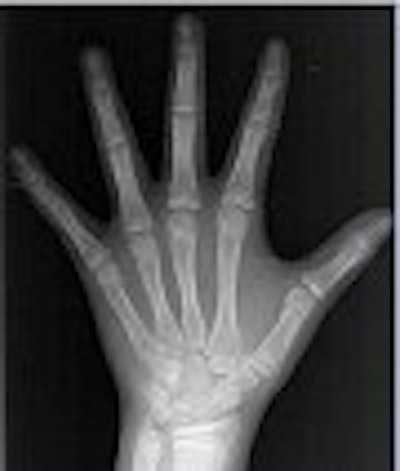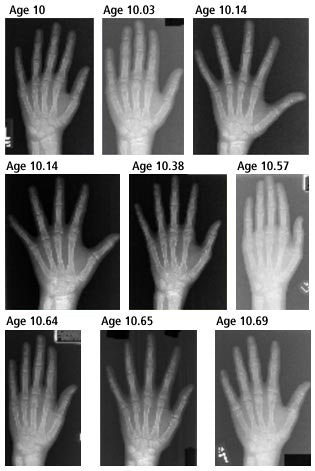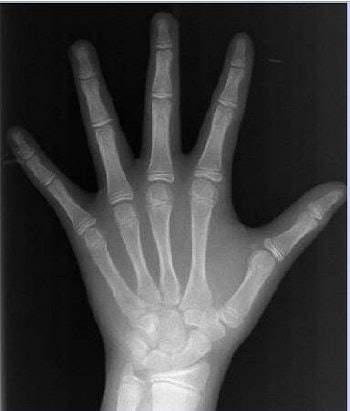
Since the 1950s, the Greulich and Pyle (G&P) atlas has been the standard reference for assessing bone age in children, and subsequently diagnosing growth disorders. But new research hints that the G&P atlas may not accurately reflect the skeletal development of today's children because of increasing racial diversity and changing nutrition and behavior.
"Current results show bone age maturation of today's children is slower than that in the G&P atlas. This is puzzling because with today's better environment and nutrition, it should be the other way around," said Dr. Han Huang, who presented the research at the 2004 RSNA meeting in Chicago. Huang is from the department of radiology at the University of Southern California (USC) in Los Angeles. His study co-authors are from USC, the Children's Hospital Los Angeles, and the Silesian University of Technology in Gliwice, Poland.
Their surprise finding was that the digital hand atlas' mean bone age for children ages 6 to 12 years was approximately 10 months lower when compared to the G&P mean.
For the study, Huang's group developed a digital hand atlas of 1,100 normal images from boys and girls (ages 1 to 18 years) of European, African, Hispanic, and Asian descent at the Children's Hospital Los Angeles. The digital radiographs underwent preprocessing and segmentation of the region of interest.
 |
| Images from the digital hand atlas showing ages 10 to 10.69 years. All images presented at the 2004 RSNA meeting in Chicago, and courtesy of Dr. Han Huang; James Sayre, Ph.D.; Dr. Vicente Gilsanz, Ph.D.; Ewa Pietka, Ph.D. |
The most important bone features for bone age assessment (BAA) were extracted. These were the length and width of the phalanges, number and overlap of the carpal bones, and stages of fusion of the epiphyses.
 |
| Digital x-ray of an African-American girl of 10.14 years. |
The bone age was assessed by two independent pediatric radiologists. Bone features were classified and stored in the digital hand atlas along with patient data such as height, weight, trunk height, and age.
Huang said the digital hand atlas will be used in daily clinical practice at his institution, with the BAA validated against the digital atlas data. "From the digital hand x-ray, you do image processing and track the bone features. This is compared with the data in the digital atlas to arrive at the bone age assessment," he said.
The researchers plan to continue the study by enlarging the sample sizes and also considering regional patient distribution effect, which may have skewed the analysis.
The G&P atlas was developed based on data from the Brush Foundation Study in the 1950s. Interestingly, Huang's team found that although skeletal age for present-day children (based on the digital hand atlas data) was lower than that of children from the Brush Foundation Study according to the G&P atlas, there was no disparity when the digital hand atlas data was compared with two other standards.
The body mass index of present-day children based on the digital hand atlas data and the body mass index based on the U.S. National Center for Health Statistics data in 2000 were statistically the same. The Tanner maturity index, which measures growth in children, was also statistically the same for the digital hand atlas data and for data from the Brush Foundation Study.
By N. Shivapriya
AuntMinnie.com staff writer
December 28, 2004
Related Reading
Breast feeding may boost bone density in adolescent mothers, July 16, 2004
Columbus Children's Hospital debuts pediatric radiography device, May 25, 2004
Misread scans often lead to osteoporosis diagnosis in children, March 22, 2004
Copyright © 2004 AuntMinnie.com



















